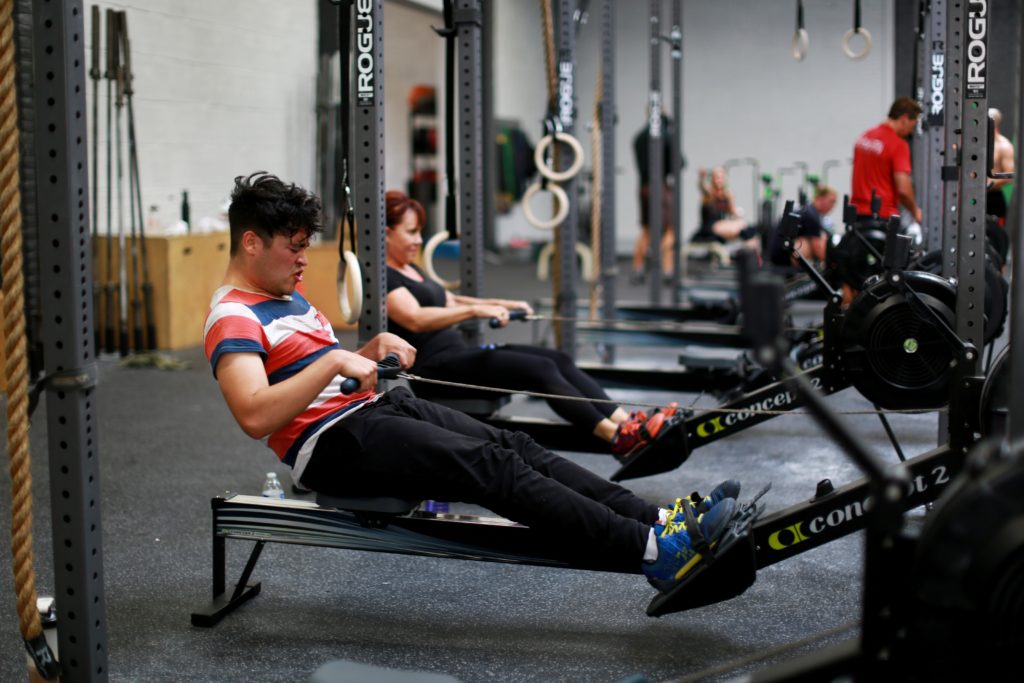
Do You Know How to Burn More Calories in Less Time?
Written by Mark Riebel & Remastered by Michele Vieux
(More Bang for Your Buck and The Myth of the Fat Burning Zone Originally Published September 14 & 15, 2009)
If you’re like most people who are balancing a hectic schedule, you probably don’t have a ton of time to spend in the gym. Or maybe you are looking to get more bang for your buck because you’ve hit a weightloss plateau in with your usual cardio routine. That is why we created our Burn 30 class because it is possible – and can even be ideal – to achieve these results by cutting your workouts to 30 minutes if you bump up the intensity.
The Fat-Burning Zone is a Misunderstood Concept
How many times have you heard that in order to really burn fat, you’ve got to work in the heart rate range of 50-70% of your maximum for at least 30 minutes? There’s even convenient charts posted on nearly every piece of cardio equipment in all the traditional gyms you go to (if you’re cheating on us here at Invictus), so it must be true. Fortunately for us, it’s not.
Yes, it is true that fat makes up the bulk of your body’s fuel for most of your daily activities and in low-intensity aerobic exercise where you’re either working for long periods of time or not breathing exceptionally hard. This fact is where the idea comes from that you must be in a certain sub-maximal heart rate range to maximally burn fat. The problem is that this is a misunderstood point.
A Higher Intensity of Exercise Yields More Results
If I only have 30 minutes to workout and use it to work at a slow and steady pace on the stairmaster while I watch TV, I might burn, say, 100 calories, approximately 50% of which are from fat. Now, if I do a more intense session, like an Invictus Burn 30 class instead then I am at a much higher heart rate (and therefore intensity level) and I could burn about 300 calories, of which maybe only 30% are fat, with glucose and glycogen making up the bulk of the rest (a small amount of protein gets burned as well). “See, you burn more fat at an easier pace!” the exercise magazines will tell you. But anyone with some basic math skills can see that more total fat was burned in the high-intensity workout (90 calories vs. 50) than the lower one, and the first workout merely had a greater percentage of calories burned from fat.
Why Higher Intensity Works: The Afterburn Effect
To understand this, we need to address the concept of excess post-exercise oxygen consumption, or EPOC. Oxygen consumption serves as an approximation of your metabolic rate, and therefore how many calories you are burning in a given period of time. EPOC, then, is the effect seen following exercise in which the body is burning more oxygen (and more calories) for a period of time anywhere from a few minutes to more than a day. This results in an elevated metabolism and creates what Alwyn Cosgrove calls an ‘afterburn.’ A study performed in 2002 at Ohio University found that following heavy resistance training circuits, EPOC was significantly elevated over baseline for 38 hours.
Doing the Math on EPOC
Using this data, let’s go back to that treadmill example. Suppose the machine tells you that you burned 300 calories in your hour spent on the treadmill. EPOC occurs as a result of aerobic training as well, but the magnitude and duration of the increase is less than that seen with resistance or interval training.
Now let’s say that at the same time you were on the hamster wheel, your friend did the aforementioned heavy lifting followed by a few minutes of short intervals on the Assault Bike. It’s likely that he didn’t burn as many calories as you in his exercise session, but let’s now look at the whole picture, i.e. all of the time following the workout. If your friend worked hard enough to bump his EPOC up to where he’s burning a paltry eight additional calories per hour, 38 hours later when his oxygen consumption returns to normal, he’s burned more calories than you, and he accomplished it in a much shorter workout.
And then think of how it would affect him if he went and worked out the next day too! Would EPOC go even higher? It is not certain whether EPOC is cumulative, but even without an additive affect, the benefits are easy to see.
Would You Rather?
Would you rather be burning more calories in the 23 1/2 hours a day you’re not at Invictus, or just burning the same old amount as usual in the 23 hours you’re not at a traditional gym (not to mention that you’d only be running and not developing your strength, flexibility, accuracy, etc.)?
If you have a weight loss goal, don’t resist your strength work. Stick to the program and talk to your coaches about making minor modifications to your fitness and nutrition programs to help you achieve your results most efficiently.
Also Check Out…